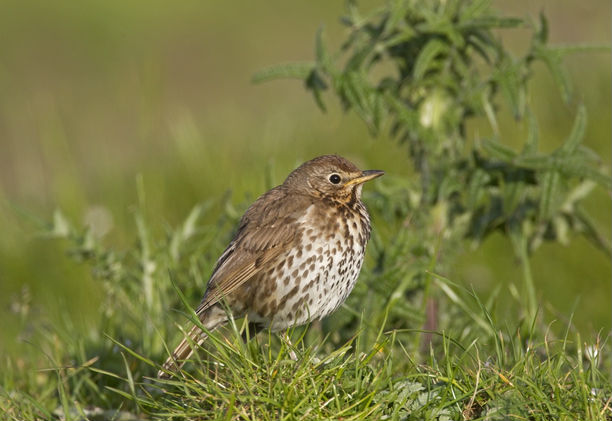Nature lovers across the country are being urged to take part in the Big Farmland Bird Count (BFBC), which is back for the sixth successive year.
The nationwide citizen science project calls on farmers, land managers and gamekeepers to spend 30 minutes spotting species on their patch of land between the 8th and 17th February 2019.
Crucially, the results will aim to distinguish which farmland birds are thriving due to good conservation efforts while identifying the ones in need of most help.
Peter Thompson, who works as a biodiversity advisor at BFBC organisers Game & Wildlife Conservation Trust (GWCT), said: “Many, many farmers do lots on their farms to encourage wildlife, but when I give talks to the public, they always seem most surprised that this is the case!
“The big farmland bird count gives individual farmers the chance to spend just half an hour counting birds on their farm, so that the GWCT can shout from the roof-tops about your results!”
Last-year saw a record-breaking 1,000 people take part in the count, recording 121 species across 950,000 acres.
A total of 25 red-listed species were recorded, with five appearing in the 25 most commonly seen species list. These include fieldfares, starlings, house sparrows, song thrushes and yellowhammers. The most plentiful of these were fieldfares and starlings, which were seen on nearly 40% of the farms taking part.
But Peter believes hundreds more people should vow their support to the initiative.
He added: “Last year, just over a 1,000 people took part in the count, which on the face of it looks fantastic. However, there are around 212,000 farm holdings and around 3000 full time gamekeepers in the UK (and a similar number who do the job part time). Therefore, less than one in every 200 (0.4%) of potential counters took part last year. Perhaps, this is why the public seem unaware of your efforts!”
Sponsoring the count this year is the NFU, whose president Minette Batters will be bird-spotting on the first day of the count on her Wiltshire farm.
“The NFU is extremely pleased to be sponsoring the 2019 GWCT Big Farmland Bird Count. This event highlights perfectly how farmers balance excellent conservation work on farms across the country alongside producing the nation’s food,” said Minette.
“Over the past four decades, farmers have carried out a huge amount of work to encourage wildlife and are responsible for protecting, maintaining and enhancing 70% of the nation’s iconic countryside.
“I would encourage as many farmers as possible to participate during the event in February as this is crucial in the survival and protection of many farmland bird species.”
CLA vice-president Mark Tufnell commented: “Rural land managers, from farmers to gamekeepers, are doing a huge amount of good work to help farmland birds, but what’s really important is that we have the best records we can of what they are delivering.
“Anyone who works on and cares for the land is vital in helping to ensure the future survival of many of the country’s most cherished farmland bird species. So, the more people we have participating the better. I urge CLA members to pick up their binoculars and take part.”
At the end of the count, the results will be analysed by the Trust. All participants will receive a report on the national results once they have been collated.
Aside from the NFU being the main sponsor, the count is also being supported by FWAG, LEAF, Kings, Perdix and CLA.


Just a minor point. Your section on the Big Bird Count for those without access to a computer is all well and good with a postal return address but you still ask people to ‘simply download the form here’.
I spent all my time in the 1970s on farmland bird watching. There were so many species. Nowadays thanks to pesticides, herbicides and intensive farming we must be 99 percent down on numbers. Farmers only seem to do a bit nowadays for the grants available. Barney from Liverpool.
Hello, can some one tell me if recording birds in my garden/on bird feeders is the right thing to do ? we are VERY rural !
Want to be involved in the bird count but want to record in the right manner !
Thanks
John
I am not a farmer or landholder but live adjacent to both arable and pasture land. Can I take part and if so how do I choose where to survey?
Paul Andrews
Unlike this page, the bird count form does not appear to be interactive, so with no printer or scanner attached to my phone, I have no way of uploading the results of the “watch” on my small farm to you other than to write them out and send hard copy with no form to GWCT or NFU. Is that likeley to be of any help to the survey?